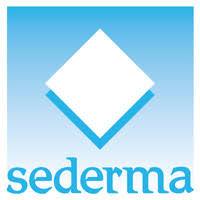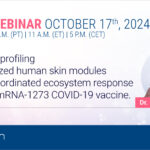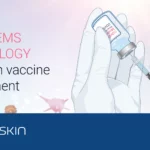Collaborations on
skin research projects
Ever since our creation, Genoskin has collaborated with major international companies of the biopharmaceutical, chemical, or cosmetic sector to help science move forward and increase the range of reliable skin models available on the market.

We strive to create innovative skin models with a high predictive value and for a wide range of applications. We are always open to new collaborations with public and private institutions to develop skin models that are adapted to your needs.
Research on skin metabolism
To contribute to fundamental research, Genoskin facilitates access to its models for academic laboratories. We have a particular interest in studying skin metabolism in all its aspects. Preferential rates apply for academic laboratories who would like to use our skin models to further their research projects. Should you like more information on our current range of human skin models and their applications, please visit our product pages. For a detailed quotation on our models and available research services, please don’t hesitate to contact us.
Research on pathological skin models
Should you be looking for a new pathological skin model for your research or study, we may also be able to help you.
If you have an interesting project in mind or simply require advice on ongoing skin research projects, please don’t hesitate to contact us. We look forward to hearing from you.
Ongoing projects
Genoskin has been awarded a grant by the ANR for the groundbreaking project “Circulating IMMune cell recruitment in Skin” (CIMMS). This project, which will run for 42 months starting from January 2022, has a total budget of €571,203. It aims to create a sophisticated ex vivo human skin model that closely replicates the recruitment of circulating autologous immune cells in injured skin, mirroring clinical situations. This innovative model is based on three key resources: an implantable device, a wound healing model, and donor blood samples. The project will utilize a microfluidic platform, adaptable to other solid tissues, to study the impact of immune cell recruitment and infiltration in various inflammatory and pathological contexts.
Case Study: Innovative Solutions for Age-Related Alopecia through the MICCA Project

Age-related alopecia is a common condition characterized by the gradual thinning and loss of hair as individuals age. This condition affects millions globally, leading to a significant demand for effective treatments. Understanding the intricate relationship between hair follicles and the microbiome is crucial in developing innovative solutions. Hair follicles are dynamic structures deeply influenced by their surrounding microbial environment. Recognizing this, the MICCA project aims to create groundbreaking hair cosmetic products using natural raw materials to target and improve the communication between hair follicle cells and the microbiome.
The MICCA Project
Genoskin, in collaboration with SISLEY France (lead partner), SEDERMA, and the Laboratory of Microbiology Signals and Microenvironment, has been awarded a grant to embark on the innovative MICCA project. The project, located in Departments 95, 31, 78, and 27, boasts a total funding of €2,334,758, including €436,940 in state aid and €594,399 in regional aid from the Regions of Occitanie and Normandie.
Objectives and Goals
The primary ambition of the MICCA project is to develop a revolutionary hair cosmetic product. This product targets the communication pathways between hair follicle cells and the microbiome using plant-based and biotechnological ingredients. By leveraging natural raw materials, the project aims to combat age-related alopecia more effectively and ethically.
Innovative Approach
The MICCA project adopts a novel approach by focusing on the microbiome’s role in hair health. The hair follicle microbiome is integral to maintaining follicle function and preventing hair loss. Disruptions in this microbial community can lead to inflammation and subsequent hair thinning or loss. Therefore, the project emphasizes developing in vitro human skin models to simulate real-life conditions accurately.
Methodology
To achieve its objectives, the MICCA project utilizes an innovative hair model that integrates the hair microbiome. This model allows researchers to study the effects of various treatments in controlled conditions. The efficacy of the active ingredient and the final product will be assessed both in vitro and ex vivo. By replicating inflammation-induced alopecia, the model provides invaluable insights into how natural raw materials can restore healthy communication between hair follicle cells and the microbiome.
Expected Outcomes
The MICCA project is set to deliver several key outcomes:
Establishment of advanced in vitro human skin models for future research and product development.
The MICCA project represents a significant advancement in the fight against age-related alopecia. By harnessing the power of natural raw materials and focusing on the crucial relationship between hair follicles and the microbiome, Genoskin and its partners are paving the way for more effective and ethical cosmetic solutions. This project not only promises to deliver groundbreaking products but also sets a new standard for research and development in the cosmetic industry.
Stay tuned as we continue to make strides in this exciting journey towards innovative hair care solutions.
Case study: The Plasmaregen Project

Description
Despite considerable progress, cutaneous wounds remain a major health concern. Skin response to injury follows a well-orchestrated succession of complex biological and molecular events to quickly achieve repair. Acute skin wounds heal with scarring but without regeneration. Recent research aims to elucidate homeostatic cues that may drive intrinsic regenerative pathways. However, recent research into the factors involved and the cellular and molecular response to injury have not yet elucidated the mechanisms that avoid scar formation. In addition, no substantial advances have been made in patient care, due to a lack in reliable therapies to treat pathological and chronic wounds.
Over the past few years, harnessing cold atmospheric plasmas (CAPs) for medical applications has turned into an innovative field of research, with diverse applications (such as decontamination and sterilization) based on the bactericidal activity of plasmas or for the treatment of tumors to inhibit metastasis and induce cancer cell death. More recently, CAP treatment was tested for the treatment of infected wounds, resulting in a reduction of the bacterial load and suggesting potential positive effects on wound healing. To date, human clinical trials have only enabled very few observations, with no supporting pre-clinical data and no understanding of the underlying mechanism of action of CAPs.
Plasmaregen objectives
Genoskin is involved in the latter two phases of the Plasmaregen project.






